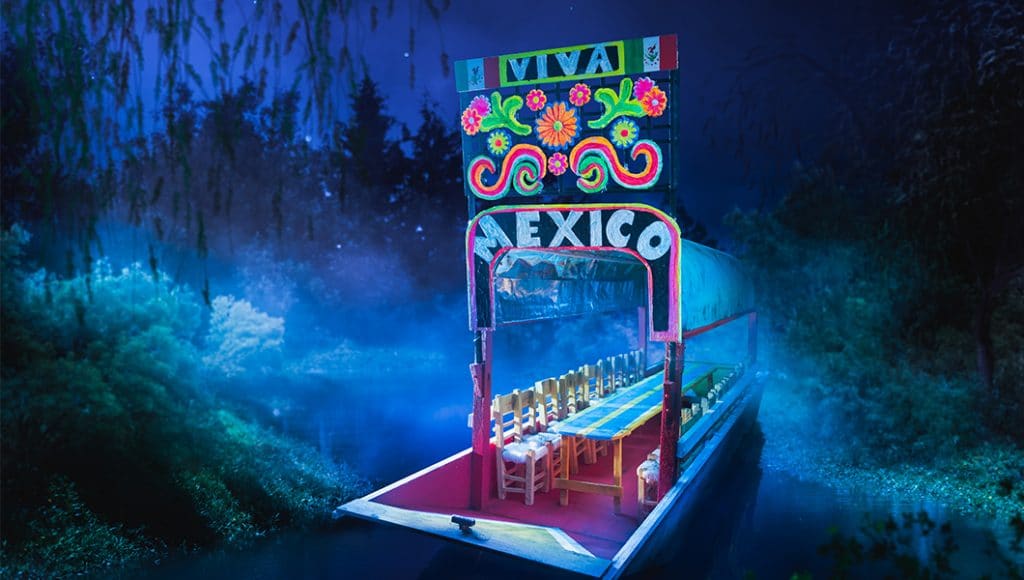La Llorona in Xochimilco

It’s nighttime, you’re on a trajinera (traditional Mexican boat), and during your journey, they tell you stories of the mythical place. Suddenly, silence falls, only to be interrupted by the cry: “Ayyyyy, my children.” The play “La Llorona” (The Weeping Woman) takes place in one of the most traditional locations in Mexico City, the Cuemanco pier in Xochimilco, specifically, at the height of the Tllilac Lagoon.
On Fridays, Saturdays, and Sundays, with some special weekday performances, from October 6th to November 19th, you can enjoy the show. We recommend two things: dress warmly and arrive at the pier an hour before because you need to be transported to the location where the play is presented.
“La Llorona” in Cuemanco
“La Llorona” (The Weeping Woman) celebrates 30 consecutive years of performances in Xochimilco – 700 shows – and it continues to thrive due to its quality on stage. The production is a blend of dance, music, and theater, all aboard a trajinera that navigates the lake in the moonlight. Additionally, the cast is highly experienced and proficient in both ancestral musical instruments and pre-Hispanic dances.
Many experiences claim to be immersive, but “La Llorona” in Cuemanco, since 1993, has demonstrated how things should be done. The performances, set design, and eerie atmosphere perfectly complement each other to tell the story of one of the most popular legends. This year, the show is named “Chokani,” which means “the one who cries” in Nahuatl, highlighting the importance of Mexico’s native languages in shaping our identity.
You can purchase your tickets here. It’s important to mention that the ticket includes a trajinera ride, which enhances this experience, lasting approximately 90 minutes. It’s a celebration of the cultural and natural richness of the region.
Who is La Llorona?
“La Llorona,” which translates to “The Weeping Woman” in Spanish, is a popular and enduring legend in Mexican and Latin American folklore. The legend of La Llorona revolves around the story of a weeping ghostly woman who is said to roam near bodies of water, such as rivers, lakes, and canals, mourning the loss of her children.
The basic elements of the La Llorona legend vary in different versions, but the core narrative typically involves a woman who drowns her own children, either intentionally or accidentally, in a fit of rage, despair, or jealousy. After realizing the gravity of her actions and the loss of her children, she is consumed by grief and guilt and is unable to find peace in the afterlife. She is condemned to wander the earth, searching for her lost children and often luring or attempting to drown other children to replace them.
La Llorona is described as a ghostly figure dressed in white, with long flowing hair, and her loud, mournful cries are said to be heard in the dead of night, striking fear into those who encounter her. The legend is often used as a cautionary tale to warn children about the dangers of wandering near bodies of water alone at night.
The story of La Llorona has been passed down through generations and has become an integral part of Mexican and Latin American folklore. It has also inspired numerous books, movies, songs, and other forms of popular culture. The legend of La Llorona continues to be a prominent and haunting figure in the collective imagination of these regions.
